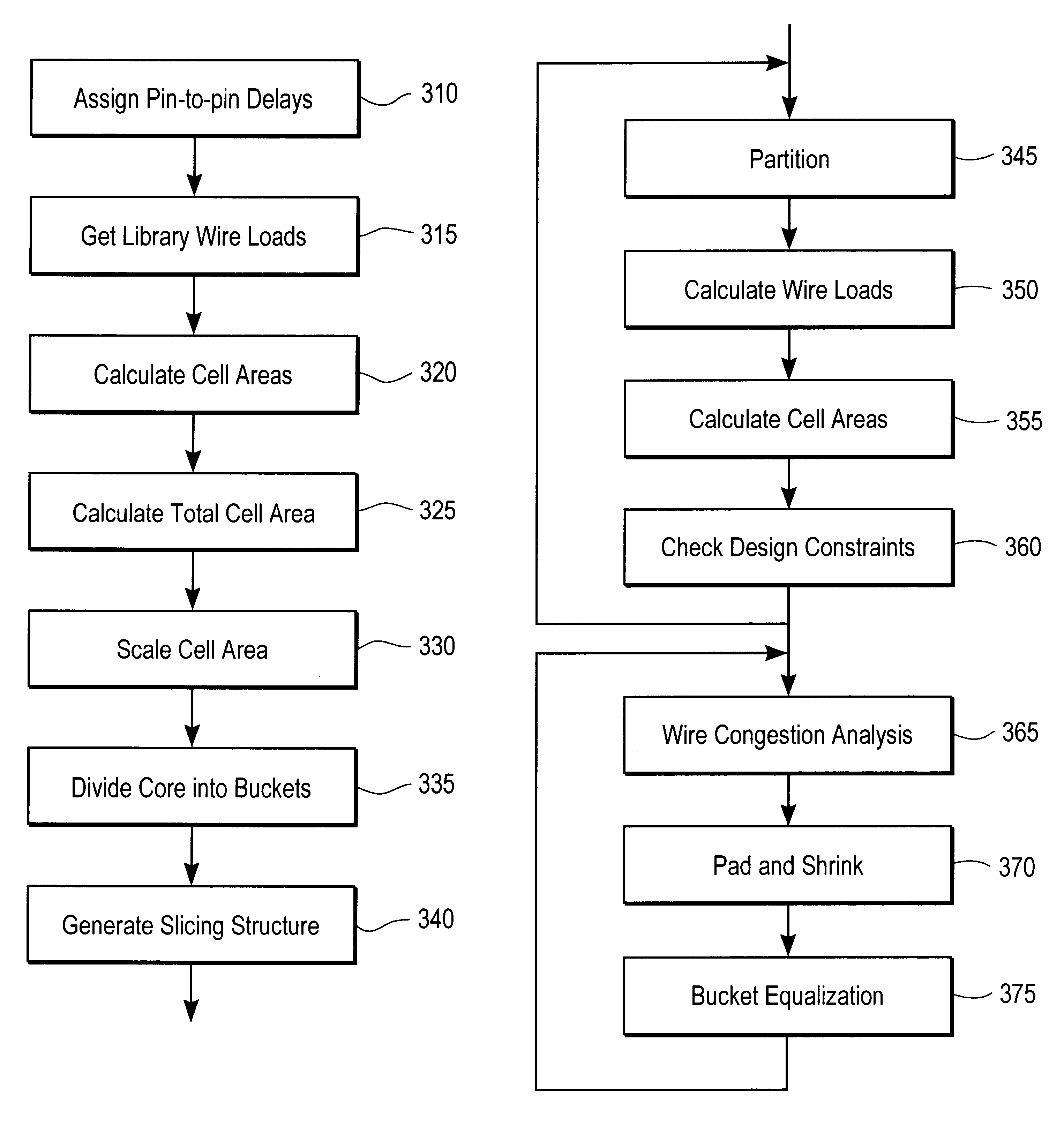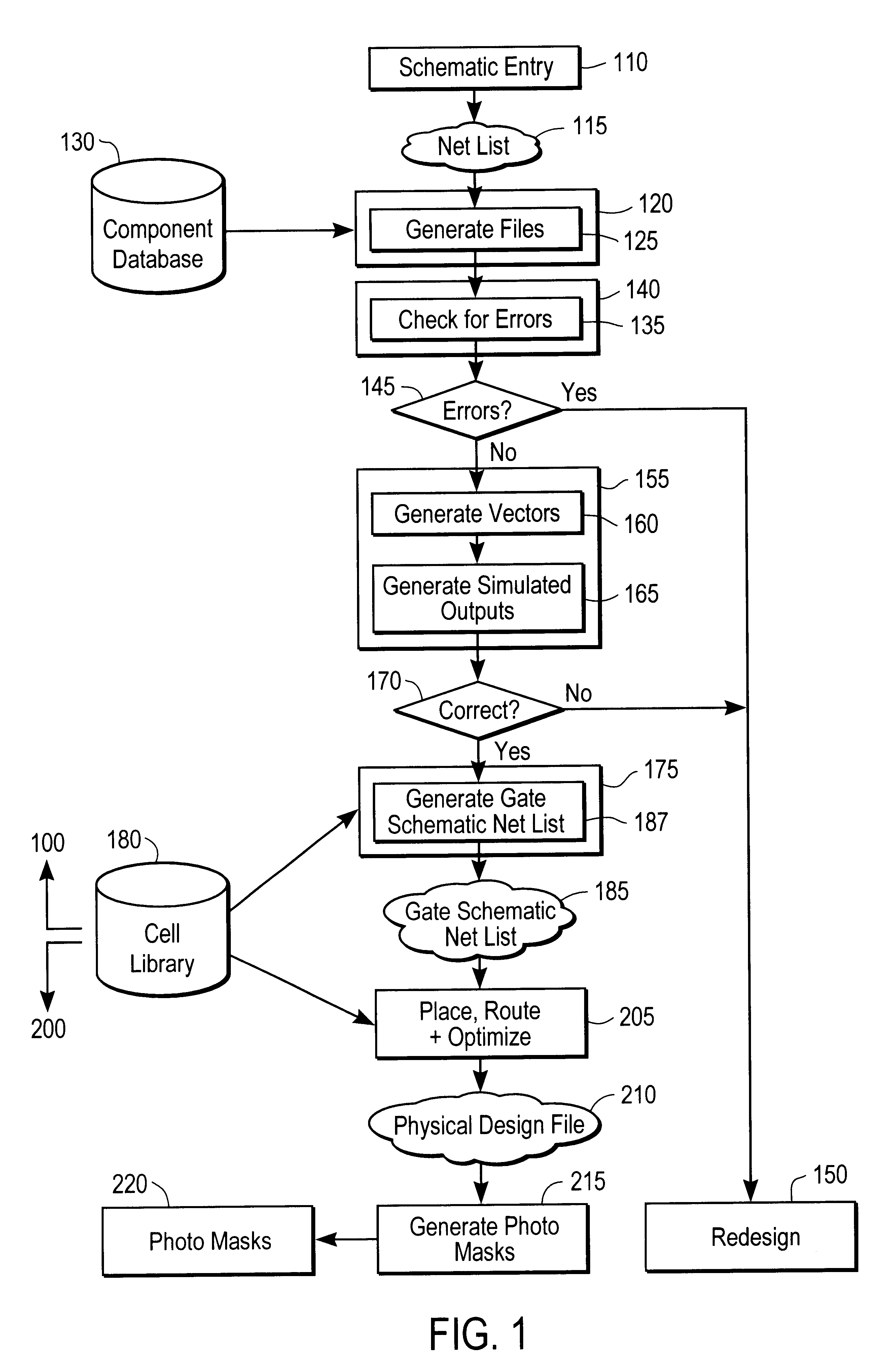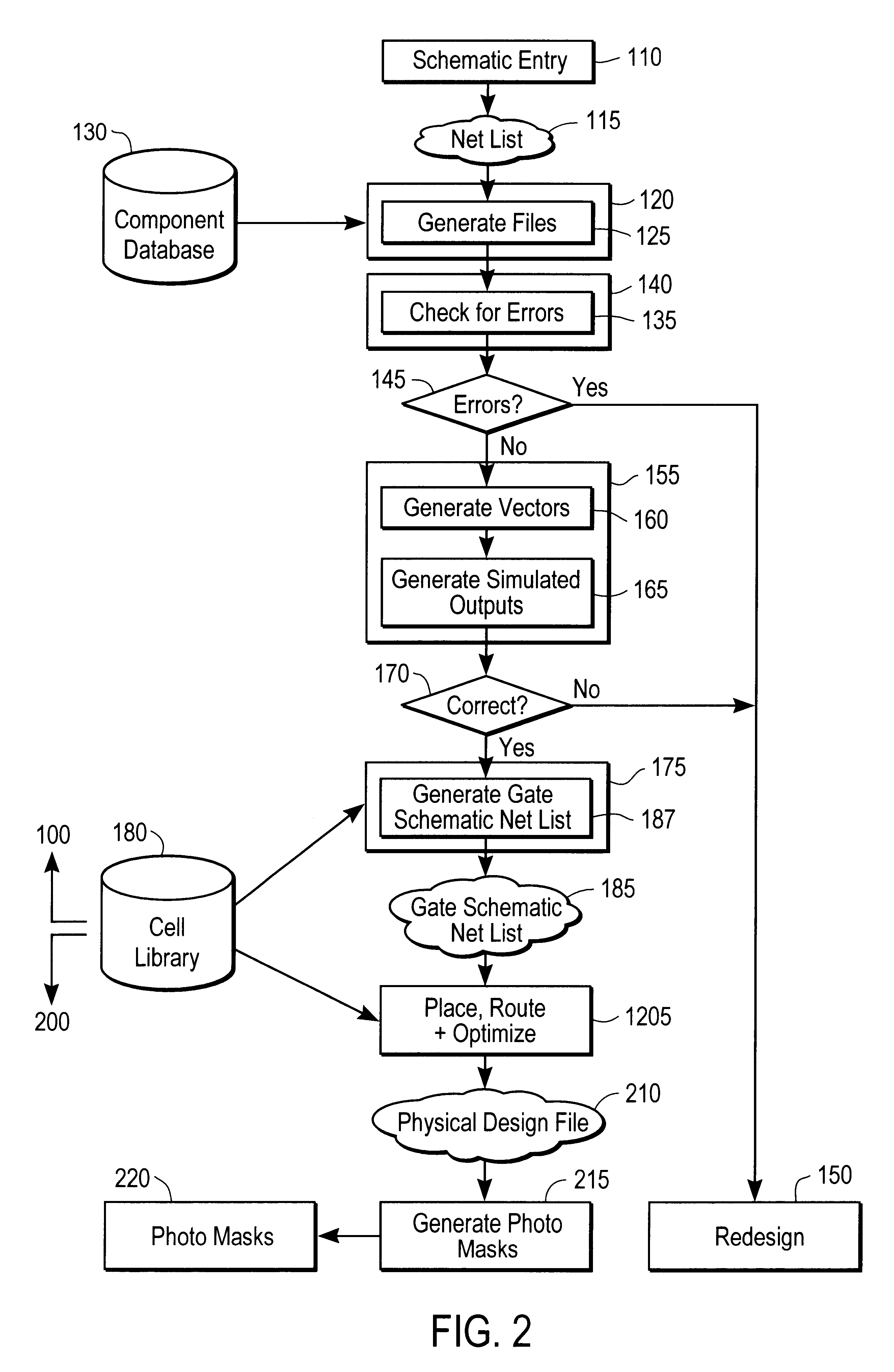System and method for estimating capacitance of wires based on congestion information
a technology of congestion information and system and method, applied in pulse technique, semiconductor/solid-state device testing/measurement, instruments, etc., can solve the problems of over-estimation of capacitance, difficulty in computing the capacitance of wires based on the steiner tree topology, and improper connection or placement of physical items within one or more cells by the designer
- Summary
- Abstract
- Description
- Claims
- Application Information
AI Technical Summary
Problems solved by technology
Method used
Image
Examples
Embodiment Construction
In one model, the delay through a single logic gate can be represented as
d=g.multidot.h+p (1)
where d is the delay, g is a parameter called the "logical effort" of the gate, h is a parameter called the "electrical effort" of the gate, and p is the parasitic or fixed part of the delay g, in turn, is defined by ##EQU1##
where gate_min refers to a minimum-sized gate and inv_min to a minimum-sized inverter. h, in turn, is defined by ##EQU2##
where c.sub.out is the capacitance out of the gate and c.sub.in is the capacitance into the gate.
In a constant delay approach to cell placement, the pin-to-pin delay of each cell is fixed early on in the optimization flow. This delay is maintained independently of the load a cell drives. In order to keep delay constant, the size of the cell is adjusted according to the load that it drives. As a result, the area of each cell in the design varies with the load that it drives. The area of each cell is
a=b+s.multidot.c.sub.out (4)
where b and s are constants...
PUM
 Login to View More
Login to View More Abstract
Description
Claims
Application Information
 Login to View More
Login to View More - R&D
- Intellectual Property
- Life Sciences
- Materials
- Tech Scout
- Unparalleled Data Quality
- Higher Quality Content
- 60% Fewer Hallucinations
Browse by: Latest US Patents, China's latest patents, Technical Efficacy Thesaurus, Application Domain, Technology Topic, Popular Technical Reports.
© 2025 PatSnap. All rights reserved.Legal|Privacy policy|Modern Slavery Act Transparency Statement|Sitemap|About US| Contact US: help@patsnap.com



